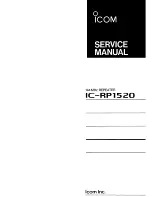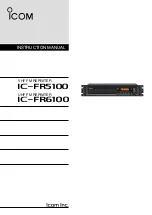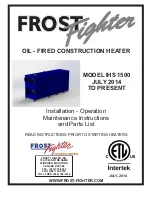
1. Instructions for Use
11/10
Pub. No. 573-B
- 2 -
Instructions for Installation and Use
1.2 Heating of the Sauna
Before switching the heater on always check that there
isn't anything on top of the heater or inside the given
safety distance. See item 1.6 Warnings.
When the heater is switched on for the first time, both the
heater and the stones emit smell. To remove the smell, the
sauna room needs to be efficiently ventilated.
The purpose of the heater is to raise the temperature of the
sauna room and the sauna stones to the required bathing
temperature. If the heater output is suitable for the sauna
room, it will take about an hour for a properly insulated sauna
to reach that temperature. See item 2 "Sauna Room
Construction - General Information." A suitable temperature
for the sauna room is about 149 - 176°F (65 - 80°C).
1.3 Control Unit of Heater
The SMS-100, SMS-125 and SMS-145 model heaters
require a separate control unit to operate the heater. The
control unit should be located outside the sauna room in a dry
place, at an height of approximately 5 ft. The temperature
sensor, by means of which the set temperature is maintained
in the sauna room, must be connected to the control unit. The
temperature sensor and the overheating limiter are located in
the sensor box installed above the heater. The sensor box
should be installed in accordance with the installation
instructions of the control unit model in question.
NOTE:
The SMS-100, SMS-125 and SMS-145 model heaters
are controlled with the S170-1 digital sauna control unit. The
SMS-100-3, SMS-125-3 and SMS-145-3 model heaters are
controlled with the S170-3 digital sauna control unit.
Steamist Digital Sauna Control:
●
Temperature adjustment range 104–194 ºF
(40–90 °C).
●
Pre-setting time adjustment range 0–12 h.
●
Lighting control, max. power 100 W, 120 V 1PH
●
Fan control, max. power 100 W, 120 V 1PH
●
Dimensions: 3.7” x 1.1” x 4.4”
(94 mm x 28 mm x 113 mm)
Power unit:
●
Supply voltage
S170-1: 240 V 1PH
S170-3: 208 V 3PH
●
Max. load
S170-1: 15 kW/240 V 1PH
S170-3: 14.4 kW/208 V 3PH
●
Dimensions: 11.0” x 3.1” x 7.9”
(270 mm x 80 mm x 201 mm)
Sensor:
●
Temperature sensor NTC thermistor 22 k
Ω
/
T=77 ºF (25 ºC)
●
Resettable overheating limiter
●
Dimensions: 2.0” x 2.9” x 1.1”
(51 mm x 73 mm x 27 mm)
●
Weight 175 g with leads, ca 13 ft (4 m)
1.4 Throwing Water on Heated Stones
The air in the sauna room becomes dry when warmed up.
Therefore, it is necessary to throw water on the heated
stones to reach a suitable level of humidity in the sauna.
The humidity of the air in the sauna room is controlled by
the amount of water thrown on the stones. A correct level of
humidity makes the bather’s skin sweat and makes breathing
easy. By throwing water on the stones with a small ladle, the
bather should feel the effect of air humidity on his skin. Both
too high a temperature and air humidity will give an unpleas-
ant feeling.
Staying in the hot sauna for long periods of time
makes the body temperature rise, which may be danger-
ous.
The maximum volume of the ladle is 0.2 litres. The
amount of water thrown on the stones at a time should
not exceed 0.2 l, because if an excessive amount of water
is poured on the stones, only part of it will evaporate and
the rest may splash as boiling hot water on the bathers.
Never throw water on the stones when there are people
near the heater, because hot steam may burn their skin.
1.4.1. Sauna Water
The water to be thrown on the heated stones
should meet the requirements of clean household
water.
The factors essentially affecting the quality
of water include the following:
●
Humus content (colour, taste, precipitates);
recommended content less than 12 mg/l.
●
Iron content (colour, smell, taste, precipitates);
recommended content less than 0.2 mg/l.
●
Hardness – the most important substances are
manganese (Mn) and calcium (Ca);
●
Recommended content of manganese 0.05 mg/l,
calcium less than 100 mg/l.
Calcareous water leaves a white, sticky layer on the stones
and metal surfaces of the heater. Calcification of the stones
deteriorates the heating properties.
Ferrous water leaves a rusty layer on the surface of the
heater and elements, and causes corrosion.
The use of humus, chlorinated water and seawater is
forbidden.
Only special perfumes designed for sauna water may
be used. Follow the instructions given on the package.
1.4.2. Temperature and Humidity of the Sauna Room
Both thermometers and hygrometers suitable for use in a
sauna are available. As the effect of steam on people varies,
it is impossible to give an exact, universally applicable bathing
temperature or percentage of moisture. The bather’s own
comfort is the best guide.
The sauna room should be equipped with proper ventilation
to guarantee that the air is rich in oxygen and easy to breath.
Bathing in a sauna is considered a refreshing experience
and good for the health. Bathing cleans and warms your body,
relaxes the muscles, soothes and alleviates anxiety. As a
quiet place, the sauna offers the opportunity to meditate.
Figure 1 - Piling of Sauna Stones


























